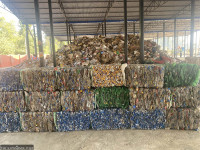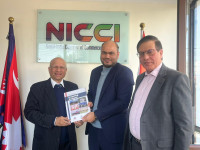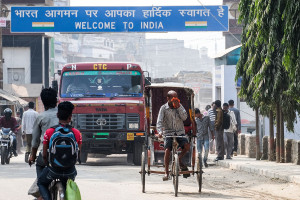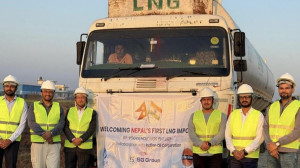Money
Arrivals hit new high but fall short of 1 million target
Arrivals to Nepal hit a new record in 2017 but remained short of the much ballyhooed target of 1 million individuals as national elections in November and December resulted in weaker-than-expected growth, the Department of Immigration said.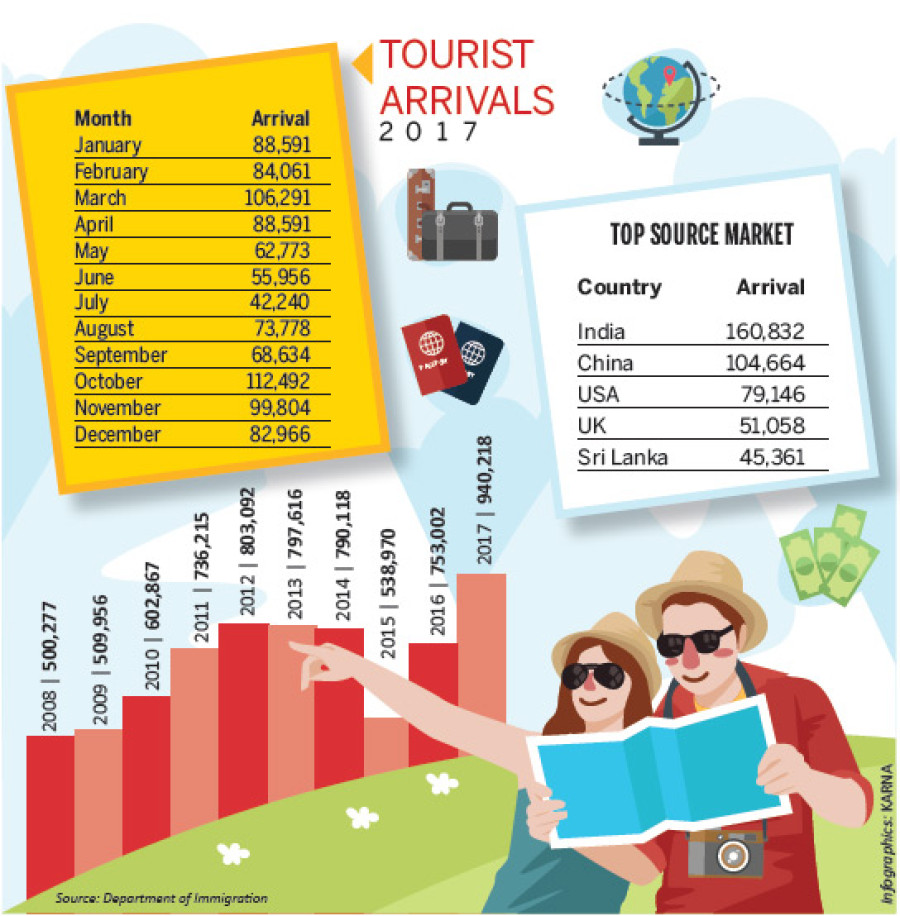
Sangam Prasain
Arrivals to Nepal hit a new record in 2017 but remained short of the much ballyhooed target of 1 million individuals as national elections in November and December resulted in weaker-than-expected growth, the Department of Immigration said. The country received 940,218 tourists last year, up 24.86 percent from 2016. The figure includes overland travellers.
However, the Nepal Tourism Board (NTB) has claimed that tourist arrivals crossed the 1.05 million mark in 2017. Its declaration is based on revenues generated from foreign tourists departing from Tribhuvan International Airport (TIA) and figures compiled from different overland entry points.
The government has permitted the NTB to collect Rs1,000 as a tourism service fee from each tourist departing from TIA. The NTB estimates that 800,000 tourists departed from TIA considering the amount of revenue collected. More than 250,000 tourists entered the country over different surface routes, with the Bhairahawa border point accounting for 150,000 foreigners alone, the board said.
As per the department statistics, arrivals from the UK, Germany, France and Spain have rebounded strongly last year. The country had been witnessing a gradual decline in European tourist numbers since 2011 due to an economic recession in most parts of Europe, travel trade entrepreneurs said.
Likewise, Nepal recorded strong arrivals from India, the US, Australia and Japan, most of them recording double-digit growth. Arrivals from India, the country’s top tourist source market, jumped 36 percent to 160,832 individuals. The highest ever arrivals from India were recorded in 2013 when the country received 180,974 individuals. Currently, more than a dozen flights are operated daily to different cities in India. Indian arrivals over surface routes, however, are not taken into account in the arrival figures.
Arrivals from China, the country’s second largest source market, have seen a nominal growth despite increased flight frequencies between the two countries. Arrivals from the northern neighbour totalled 104,664 individuals last year. Currently, Chinese carriers Air China, China Eastern, China Southern, Sichuan Air and Tibet Airlines connect Nepal with mainland China.
“It’s better-than-expected arrivals,” said immigration official Krishna Sapkota. “However, the elections that started in the second quarter of 2017 partly affected the country’s aim to host 1 million visitors.”
According to travel trade entrepreneurs, elections and tourism are interrelated in any country. Travellers normally avoid destinations where polls have been announced. The first phase of elections to the House of Representatives and Provincial Assemblies was held on November 26 while the second phase was held on December 7.
The statistics also show weaker-than-expected growth in November, the country’s peak tourist season. Arrivals in October reached an all-time high of 112,492 individuals. However, the growth momentum slowed in November with 99,804 arrivals. The country recorded the lowest arrivals in July, the peak monsoon period. Arrivals in July 2017 have dropped significantly compared to arrivals during the same period in 2016.
Following the devastating 2015 earthquake, Nepal has been featured regularly in different foreign publications and media among the top destinations to visit in 2017. This has greatly helped the country to attract foreigners, said Deepak Raj Joshi, chief executive officer of the NTB.
According to him, more than 560 international tour operators, media representatives and bloggers were invited to Nepal last year in a bid to promote the country. “Despite poor international airport capacity to handle growth and limited infrastructure, the growth in arrivals is phenomenal,” said Joshi, adding that marketing played a key role in boosting arrivals. “This trend will continue this year as well.”
With the improved arrivals, tourism revenues are also expected to beat expectations. The country earned a record Rs58.52 billion in foreign exchange from the tourism industry in the last fiscal year 2016-17 ending mid-July, according to the figures released by Nepal Rastra Bank.
The amount represents a sharp 40 percent jump from the previous fiscal year. The total annual earnings of the tourism industry are set to exceed Rs70 billion in 2017, according to government officials.




 15.12°C Kathmandu
15.12°C Kathmandu

